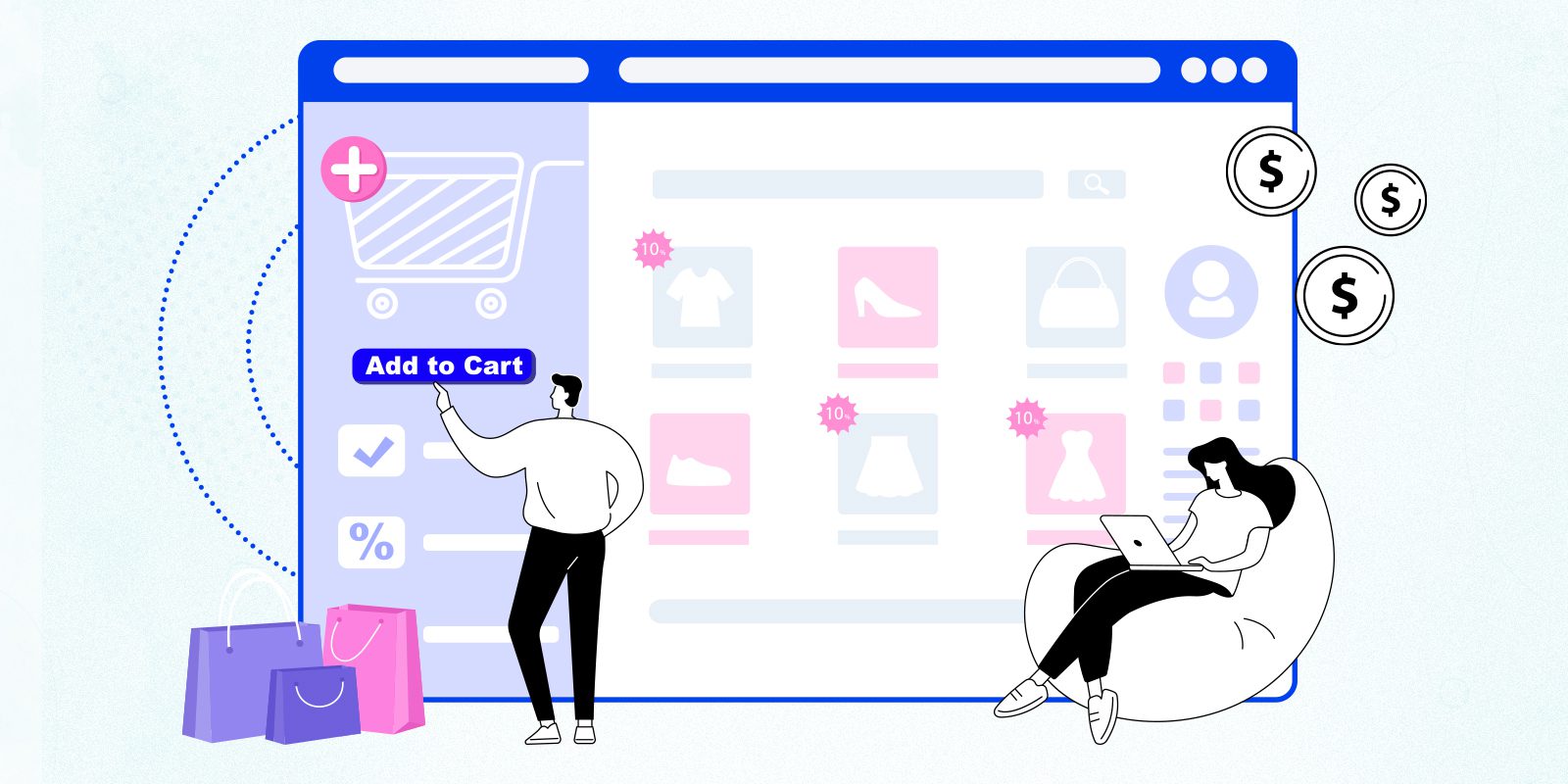In the dynamic world of e-commerce, the key to success lies not just in attracting clicks but in converting them into sales. From the initial point of contact to the final purchase, a seamless and strategic approach is essential. In this comprehensive guide, we’ll explore six essential e-commerce strategies that are guaranteed to turn clicks into cash and skyrocket your sales.
1. Optimized Product Listings: The Gateway to Conversions
The journey to a successful sale begins with your product listings. Optimized listings are the gateway to conversions, capturing the attention of potential customers and guiding them through the decision-making process. Start by ensuring that your product titles are clear, concise, and include relevant keywords. This not only improves visibility in search results but also provides customers with quick insights into what you offer.
The importance of high-quality images cannot be overstated. Invest in professional, well-lit product photography that showcases your items from multiple angles. Accompany these visuals with detailed product descriptions that highlight key features, benefits, and any unique selling points. Remember, transparency builds trust – be honest about what customers can expect to receive.
Additionally, implement a user-friendly navigation system that allows visitors to easily filter and compare products. Whether it’s size, color, or other specifications, providing intuitive filters ensures a smooth shopping experience. The goal is to make it as effortless as possible for customers to find, understand, and ultimately choose your products.
2. Responsive Design: Meeting Customers Where They Are
In an era where consumers browse and shop across various devices, a responsive website design is no longer optional – it’s a necessity. Your potential customers might be viewing your site on smartphones, tablets, laptops, or desktops, and a seamless experience across all these platforms is crucial for conversion.
Responsive design goes beyond aesthetics; it’s about ensuring that your website functions flawlessly regardless of the device used. Slow-loading, clunky sites lead to high bounce rates and lost sales opportunities. Optimize your website for speed, compress images, and implement lazy loading to prioritize content that users see first.
Moreover, ensure that your checkout process is also mobile-friendly. Lengthy forms and complex navigation can lead to abandoned carts. Simplify the checkout process, allowing customers to complete their purchase quickly and easily, regardless of the device they’re using. By meeting customers where they are, you’re laying the foundation for a positive and conversion-focused user experience.
3. Personalized Shopping Experiences: From Clicks to Connections

As e-commerce continues to evolve, the importance of personalized shopping experiences cannot be overstated. Tailoring your offerings and interactions to individual customer preferences creates a sense of connection and increases the likelihood of conversions. Start by leveraging customer data to recommend products based on past purchases, browsing history, or wish lists.
Implementing a robust customer segmentation strategy allows you to target specific groups with personalized promotions and discounts. Whether it’s a loyalty program, special offers for first-time buyers, or exclusive perks for long-time customers, personalized incentives create a sense of exclusivity that resonates with your audience.
Beyond promotions, consider implementing personalized content recommendations. This could include curated product collections, blog posts, or even personalized emails based on customer behavior. The goal is to show your customers that you understand their preferences and are committed to enhancing their shopping experience. When customers feel seen and appreciated, they’re more likely to convert those clicks into purchases.
4. Streamlined Checkout Process: Minimizing Friction, Maximizing Conversions

A lengthy and complicated checkout process can be a major roadblock to converting clicks into sales. Streamlining the checkout process is crucial for minimizing friction and maximizing conversions. Begin by implementing a one-page checkout system that consolidates essential information into a user-friendly form. This reduces the steps customers need to take, decreasing the likelihood of abandoned carts.
Another critical aspect is providing multiple payment options. Cater to a diverse audience by offering various payment methods, including credit cards, digital wallets, and other popular options. The more flexibility you provide, the more likely customers are to complete their purchases.
Moreover, implement trust-building elements throughout the checkout process. Display secure payment icons, offer guarantees, and assure customers that their data is handled with the utmost confidentiality. These trust signals alleviate concerns and instill confidence, encouraging users to proceed with their transactions.
5. Strategic Upselling and Cross-Selling: Boosting Average Order Value

Turning clicks into cash goes beyond the initial sale; it involves strategic upselling and cross-selling to boost the average order value. Implement product recommendations strategically throughout the customer journey, suggesting complementary items or upgrades that align with their current selections.
Consider offering bundled deals that provide value for money. Highlight the savings customers can enjoy by purchasing related products together. Whether it’s suggesting a matching accessory, an extended warranty, or a bulk discount, the goal is to entice customers to add more to their carts.
Timing is crucial in upselling and cross-selling. Present these offers at strategic points, such as during the checkout process or after a successful purchase. Use persuasive language and visuals to convey the benefits of adding the suggested items. By tactfully increasing the value of each transaction, you’re maximizing the revenue generated from every click.
6. Proactive Customer Support: Turning Clicks into Advocacy
Exceptional customer support is a powerful catalyst for turning clicks into long-term customer advocacy. When customers encounter issues or have questions, a prompt and helpful response can make all the difference. Implement live chat support on your website to address customer inquiries in real-time and guide them through the decision-making process.
Furthermore, leverage social media and email to proactively reach out to customers post-purchase. Solicit feedback, ask about their experience, and provide avenues for them to voice any concerns. A customer-centric approach not only resolves issues promptly but also turns potentially negative experiences into positive ones.
Encourage and showcase customer testimonials and reviews. Positive feedback serves as social proof, instilling confidence in potential buyers. Actively engaging with your audience and showing genuine care for their satisfaction fosters a sense of trust and loyalty. Ultimately, turning clicks into cash isn’t just about making a sale; it’s about creating advocates who will continue to support and promote your brand.
Frequently Asked Questions (FAQ)
What are the essential metrics to monitor in Google Analytics?
Key metrics in Google Analytics include bounce rate, time on page, pageviews, and conversion rates. Additionally, analyze traffic sources, user demographics, and behavior flow. These metrics provide insights into user engagement, the effectiveness of your content, and areas for improvement.
How can I measure the success of my email marketing campaigns?
Success in email marketing can be measured through key metrics like open rates, click-through rates, conversion rates, and the overall growth of your subscriber list. Use these metrics to refine your strategies, test different approaches, and continually improve the effectiveness of your campaigns.
Should I prioritize desktop or mobile optimization?
Both desktop and mobile optimization are crucial. Google prioritizes mobile-friendly sites, but desktop users still exist. Ensure a responsive design that adapts seamlessly to various devices. Regularly test and optimize for both desktop and mobile experiences.
What’s the ideal frequency for updating website content?
Regular updates are essential for SEO, but there’s no one-size-fits-all frequency. It depends on your industry, content type, and audience. Strive for consistency and focus on quality. Monitor engagement metrics to gauge the optimal content update frequency.
Are all backlinks equally valuable?
No, not all backlinks are equal. High-quality backlinks from authoritative and relevant websites carry more weight than low-quality or spammy ones. Focus on earning backlinks from reputable sources within your industry to build credibility and improve SEO.
Can I use the same keywords for every piece of content on my website?
While core keywords may remain consistent across your site, it’s essential to diversify and use variations. Tailor keywords to specific content and audience intent. This approach not only improves SEO but also enhances the relevance of your content to different user queries.
How long does it take to see results from SEO efforts?
SEO is an ongoing process, and the timeline for results can vary. While some improvements may be noticeable in a few weeks, significant changes may take several months. Consistent efforts in content creation, optimization, and link building contribute to long-term success.










